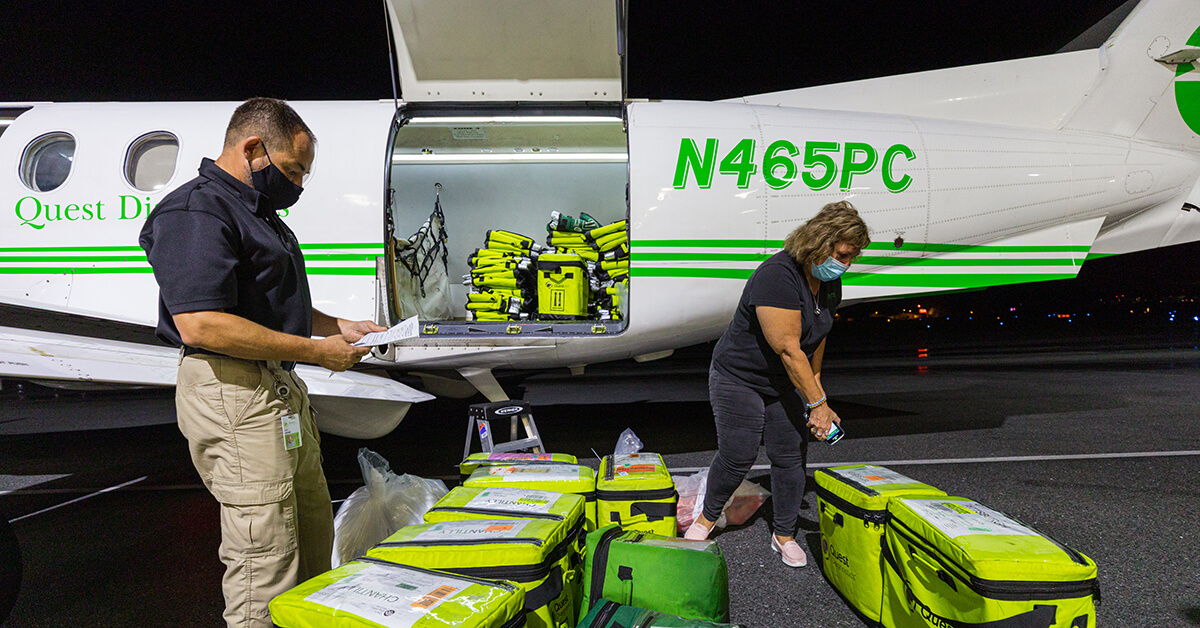
Dec. 11, 2020
The FAA has released Safety Alert for Operators (SAFO) 20017 outlining guidance for use of dry ice in shipments traveling by air. The SAFO comes as a Food and Drug Administration (FDA) committee voted Dec. 10 to recommend emergency use authorization (EUA) of a COVID-19 vaccine produced by Pfizer and BioNTech that must be kept chilled during shipping.
The FDA is expected to issue the EUA notice as soon as Friday, authorizing 6.4 million initial doses of the vaccine for transport. The vaccine will be shipped in large (48″ x 40″ x 54″) packages approved to carry up to 23 kg (50.7 lbs) of dry ice, a significantly greater amount than what is typically used in transporting medical specimens and other temperature-sensitive cargo.
SAFO 20017 warns such quantities can pose significant health risks to flight crews unless proper ventilation is available. As it warms, dry ice sublimates to carbon dioxide (CO2) gas, which can cause drowsiness at concentrations as low as 10 parts per million (ppm) and lead to immediate unconsciousness, seizures and death at greater than 100,000 ppm. The changing weight of evaporating dry ice may also affect an aircraft’s center of gravity.
Read SAFO 20017: “Transportation of COVID-19 Vaccines Requiring Large Quantities of Dry Ice” (PDF)
“Business aviation operations that gain regulatory approval to transport these vaccines must follow the correct procedures to ensure the safety of pilots and others onboard,” said Doug Carr, NBAA vice president of regulatory and international affairs. “This SAFO offers a detailed explanation of the risks involved in handling dry ice in large quantities.”
However, Carr emphasized the FAA guidance “is not a hazmat (hazardous materials) carriage compliance document. Operators seeking to transport these vaccines must undergo the required training and gain appropriate regulatory clearance to handle these shipments.”
With such flights occurring at the same time new cases of COVID-19 surge across the country, on Dec. 10 the FAA also issued an updated version of SAFO 20009, “Updated Interim Occupational Health and Safety Guidance for Air Carriers and Crews,” with expanded health and safety guidance for operators.
Among the changes over the previous document, issued in May 2020, is stricter language on the use of facemasks when in close proximity to other people and expanded guidance on minimizing exposure, establishing employee health monitoring, developing company response plans, and notification of the necessary health authorities when an employee tests positive for COVID-19.


 International Business Aviation Council Ltd.
International Business Aviation Council Ltd.